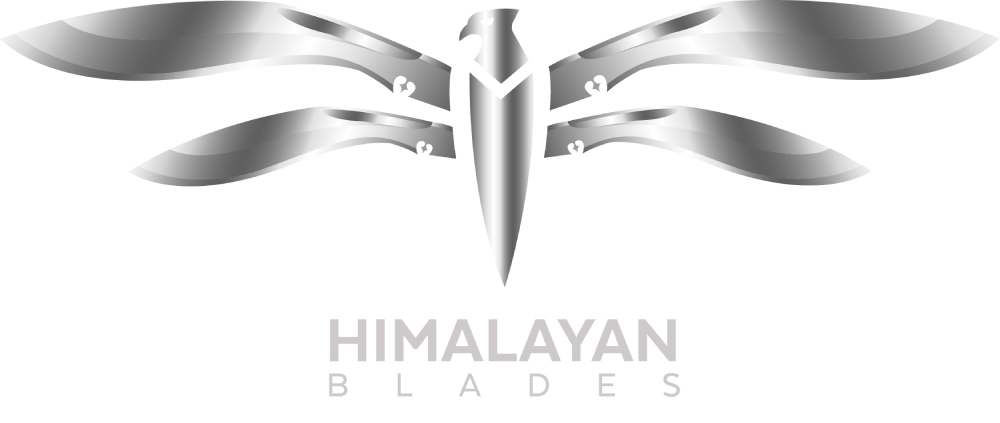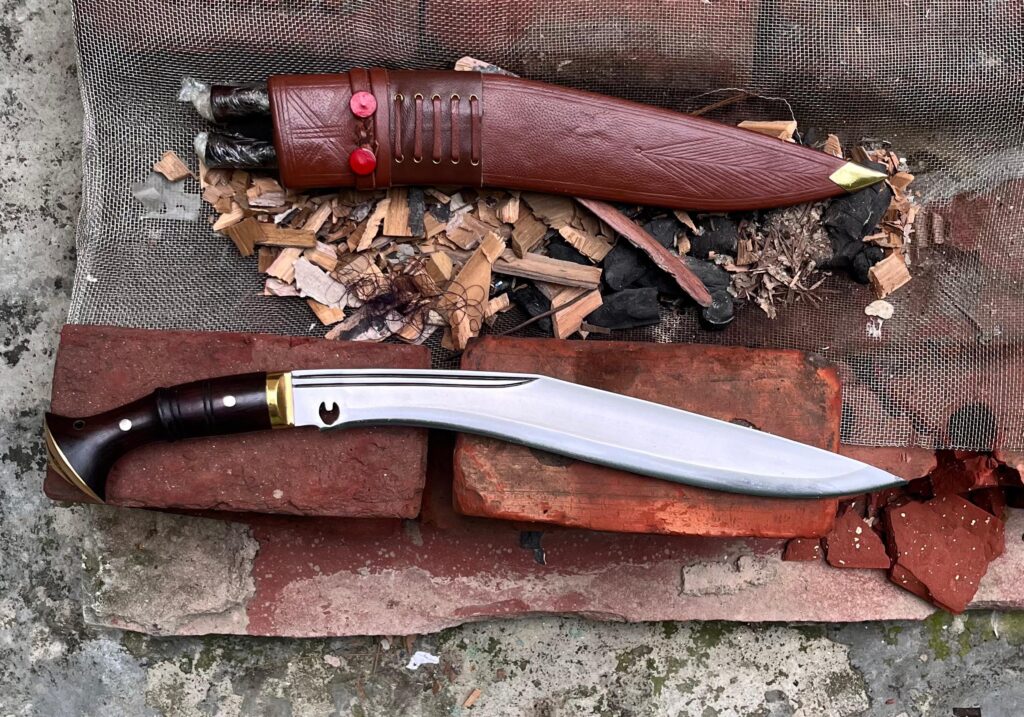
Introduction
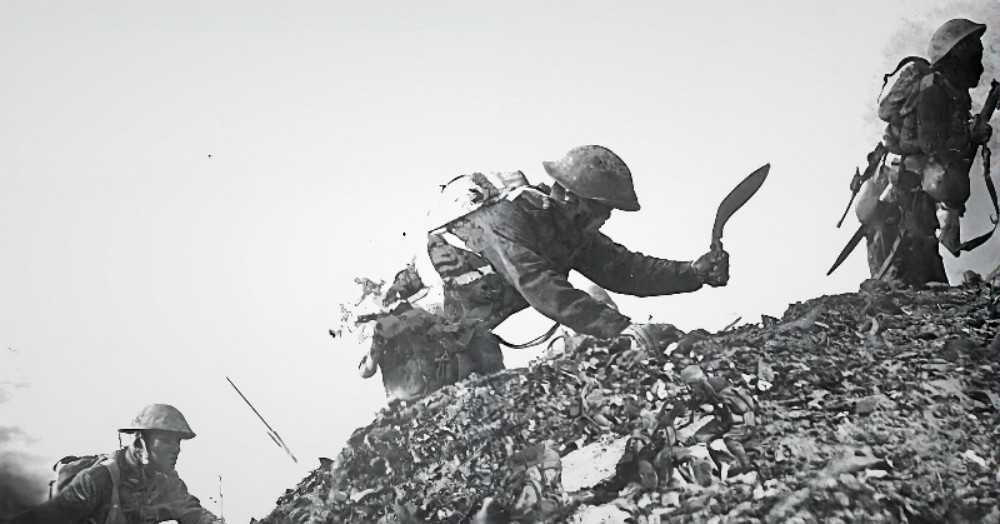
Search the internet for self-defense Kukri Knife and you’ll find a rat’s nest of myth, veneration, and practical advice. The kukri is not a fad blade — but an implement that has perhaps been used as long, if not longer than any other, on the battlefield or in survival. In this guide, I’ll mix real-world experience, historical context, sound physics, materials advice, yes, even the legal landscape (all in focus for U.S. citizens), and training suggestions so that you can decide if the kukri has a place in your personal defense plan.
Short Takeaway (What matters most)
Yes — the kukri can be a very effective tool for self-defense if you treat it as a large work knife that demands training, context (wilderness, rural defense, and camping), and strict attention to the law. In urban, city fighting or in legal battles, it usually generates more liability than benefit.
Why the self-defense kukri knife matters: history borne out in use
The kukri was a product of Nepali life: a versatile blade for farming, woodcutting, and fighting. Its legend was also built in part by Gurkha soldiers who used to carry variants of the kukri into battle and in their daily work, and that comes with battlefield credibility — because weaponry like the kukri was not designed within the confines of a marketing advisory board meeting. It was a tool as well as a close-in weapon for centuries, and that’s why it still earns the admiration of military historians and bladists alike. Wikipedia
Blade geometry & physics: the conversion of shape to stopping power
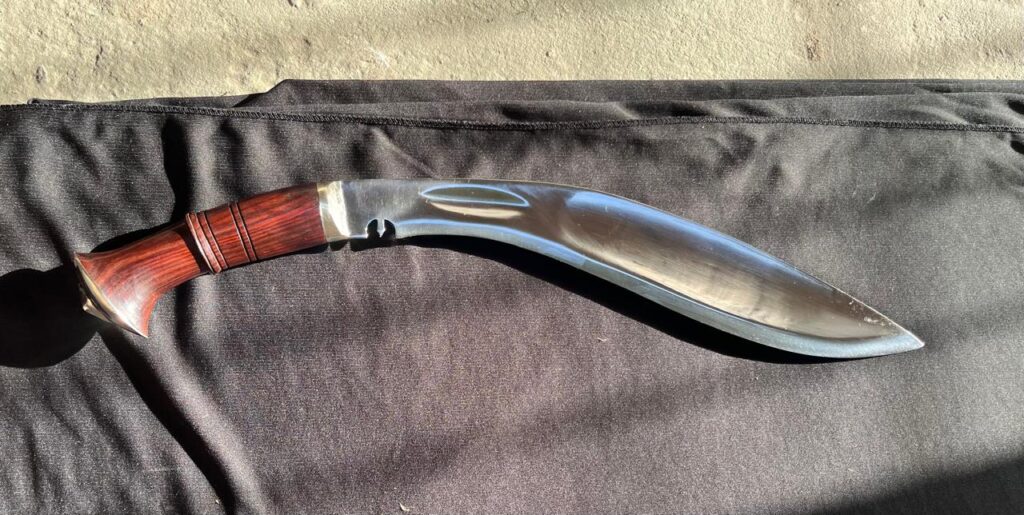
The kukri’s seemingly simple secret is that its profile emphasizes both an inward curve and a forward-biased mass. Geometry offers three mechanical advantages in self-defense:
Forward whip: The front-heavy tip adds momentum (matter × speed), so swings pack more punch than with a straight knife of similar size. It is with a hand a bit a small axe behaves. Iain Abernethy
Recurve bite: The curved edge “hooks” and pulls while cutting, making contact time and wound depth greater compared with a straight edge with equal effort.
Chopping leverage: A shallow blade grind makes it easy to bite more deeply when dressing game, and a beefy substrate cuts through fibrous material with ease— also important after something has been drop-tined.
Put simply: A kukri delivers serious chopping force without as much upper-body muscle power, so it’s no wonder Gurkha lore and survival guides alike sing its praises.
Materials & construction: what to buy (and avoid)
If you are purchasing a kukri that you anticipate depending upon:
Steel: For kukris, 5160 or similar spring/high-carbon steels are used because they provide a good balance between toughness and edge-holding capability in a knife, which is subjected to wave impact. The appropriate heat treatment is more important than the specific alloy.
Full tang & durable handle: Can be wood, horn, or modern composites; make sure the fit is tight, the pins or rivets won’t work loose, and the shape prevents slippage.
What to look for in a good sheath: A good sheath isn’t just a functional one that protects the blade; it is also easy and secure to draw from. A kukri set also typically includes a small karda (utility knife) and chakmak (sharpener) — for use in the field.
Steer clear of low-quality stamped blades, flimsy tangs, and untreated high-carbon steel knives passed off as “kukris.” Forged of heat-treated steel for a cutting edge that won’t chip or snap during hard use in the field.
Tactical utility for self-defense: capabilities and practical limitations
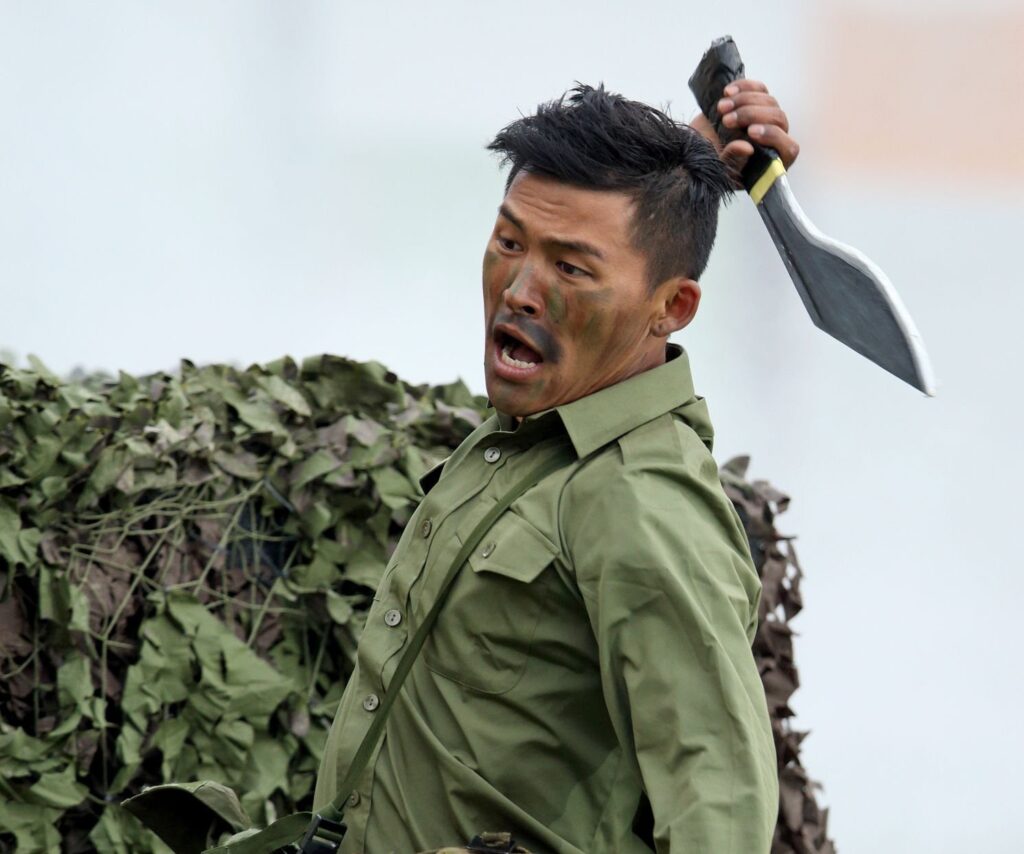
Strengths
Versatility: It can be used as shelter and camp gear — handy if your self-defense situation involves survival activities.
Stopping power: A single controlled chop or cut could eliminate, or at least dissuade, an attacker. In wilderness or rural defense scenarios, that could be significant.
Deterrence: The shape of the kukri is instantly recognizable; its very presence may occasionally decrease the risk.
Limits
Size & concealability: Few kukris are slim, so few are candidates for concealed urban attack; they require the space to swing.
Tiring: Bulky, shooty, cutty blades tire the man swinging them away quicker than nimble ones.
Escalation, legal exposure: Drawing a big fixed blade often escalates conflict and introduces legal jeopardy — see next section.
Skill Required: The ability is useless without hands-on training; reckless swings can yield self-harm or disarming.
If you plan on deploying a self-defense Kukri Knife: consider your environment (woodsy or urban), think about what training you will need and then also backup non-lethal methods (awareness, evasion).
Current legal reality in the US for self-defense kukri or machetes (fact-based and practical)
Laws on knives also vary enormously from one state to the next, and even between counties and cities. By October 23, 2025, possession of a kukri is generally legal, although carrying a large fixed blade in public may be restricted or treated as a dangerous weapon depending on the applicable laws and size of the blade. Authoritative state summations (for example, the one from the American Knife & Tool Institute) are a good first stop to check local laws before carrying or using any fixed blade. Be sure to check current local statutes and case law as knife laws and tools of enforcement change, not just at an arrest; they are interpreted at the time of a prosecution. American Knife and Tool Institute+1
Real sound legal advice: if you’re using a kukri in the bush, pack it in gear bags while traveling, don’t take this into town concealed, and if asked, document legitimate uses (work, hunting, camping). Large Fixed Blades: Products that excel at being a piece of equipment that can get you in deep legal trouble if unsheathed on the street when violence inevitably comes calling.
Training: non-negotiable if you plan to use one defensively
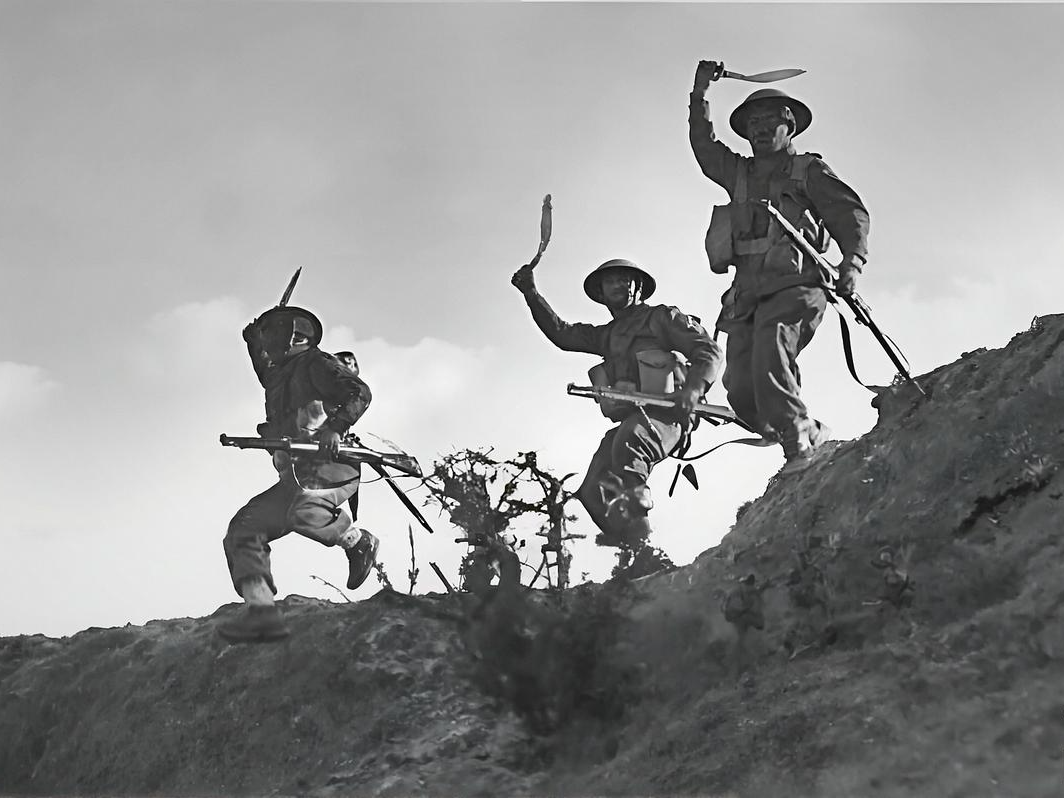
Gurkha proficiency evolved from lifelong work; today’s civilians must train with intent. Key areas:
Safe draws & sheath work – train until the movements are second nature.
Chop mechanics & footwork — you use your entire body — not just the wrist.
Retain & disarm awareness — think of how much real estate your hands occupy when you grab one of these heavier blades.
Scenario drills — practicing stress with an instructor in a simulated environment prevents mistakes under pressure.
And if you choose to keep a kukri for defense, combine it with formal instruction and realistic practice — not just cutting logs in the back yard.
Maintenance & responsible keeping
And, as always, keep the blade dry and oiled; carbon steels rust. Hone and strop often, sharpen the edge to a level you want for your expected use ( not “glass-shave fine for a chopper blade). Keep it stored safely, follow safe guidelines when drawing it, and don’t whip out a blade in public.
Bottom line, who should really think about the kukri for self-defense.
Yes, take it if: you are a prepper, MMA practitioner, or bushcrafter who trains in the field often, works in a rural/ isolated area, and appreciates one ceases all cutting tool doubling up as a defensive weapon.
No, stay away from it for: general urban carry (or a primary “street” self-defense tool), where smaller, legal, and easier options (pepper spray; compact fixed-blade under local law; folding knives) are generally more usable.
Kukri: The kukri is a mighty, ancient blade. In the right hands, in the right context, it can save your life; without training and legal savvy, you might lose everything.
FAQs
Q1 — What are kukris used for?
Chopping wood, field/all purpose tasks, skinning & butchering game and close-quarters applications. Once used every day as a military sidearm.
Q2 — Can you own a kukri in the U.S?
Ownership is generally legal; carry laws vary by state. Refer to local statutes and such as AKTI for current summaries.
Q3 — Can a novice handle the kukri for self-defense?
Not safely. Practice is necessary to not practice self-harm and the effective use of the blade.
Q4 — What is the best type of steel in a kukri?
5160 and other spring steels are popular for toughness and shock resistance; the most important thing is to properly forge and heat treat them.
Q5 — Is it good idea to have a kukri to defend myself in the city?
Not usually — it’s unwieldy, legally dangerous in many places, and may intensify confrontations. Think of some options that suit your local law and lifestyle.
